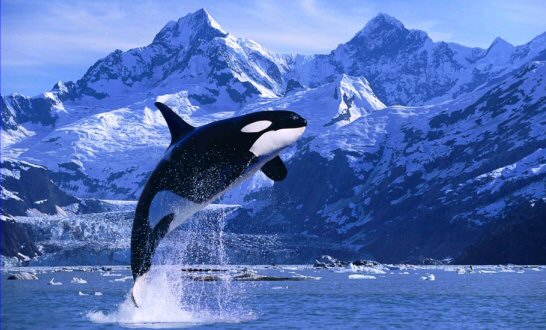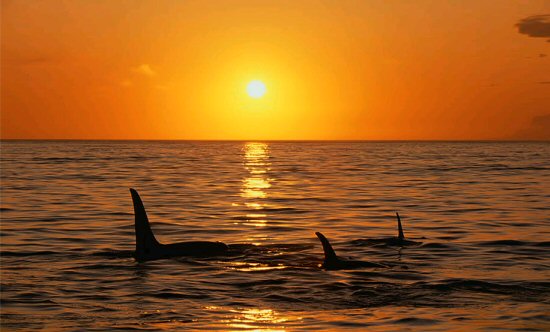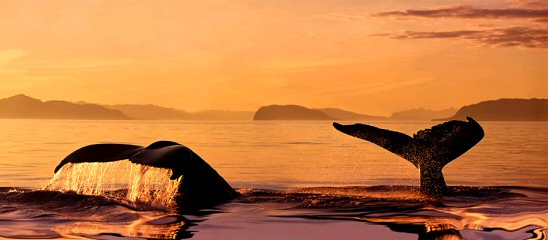Final Project Proposal: Alex Li, Julie Tung
Project Goals
Our goal is to realistically render a scene of the surface of the ocean with killer whales. Below we have a few of our inspirational images. While some work has already been done in the area of rendering the surface of the ocean, we would like to especially investigate the realistic rendering of disturbances in the water, caused by the killer whales splashing and rippling the surface of the water.


Photo Credit: http://www.wildthingsphotography.com
Techniques and Challenges
Rendering the Surface of the Ocean
Our initial approach will probably be based roughly on Jerry Tessendorf's "Simulating OCean Water" talk at Siggraph 2004. We are probably going to use a procedurally generated height field using FFT's to represent the surface of the ocean. We are also looking into ways to model light transport from the sky to the ocean in order to generate realistic highlights.
Additional Sources:
Realistic, Real-Time Rendering of Ocean Waves: http://www.visgraf.impa.br/Data/RefBib/PS_PDF/lvelho-cavw04/rtwave.pdf
Rendering Natural Waters: http://www.cs.utah.edu/vissim/papers/water/waterColorPG.pdf
Subsurface Scattering
We will use subsurface scattering techniques in order to help make the waves in the ocean look realistic, using the algorithms for BSSRDFs from this paper: http://graphics.ucsd.edu/%7Ehenrik/papers/fast_bssrdf/. In addition, we will also try to use subsurface scattering on the killer whales' skin, hopefully to make it slightly translucent and exhibit accurate optical properties. The challenge in this aspect is that we don't have experimental data on the optical properties of the whales' skin, so it will mos likely be an approximation of parameters for whatever can make the whale look most realistic.
Modeling Water Splashes
We would like to realistically model the interaction of the killer whale with the surface of the water, causing some splashing and possibly ripples in the water. To do this, we will most likely be modeling the splashing water droplets in a particle system, and then model the interaction of the killer whale with the water as an external object exerting some force on the water, causing droplets to be generated and splashed up.

Additional Sources:
Dynamic Simulation of Splashing Fluids: http://www.cs.berkeley.edu/~job/Papers/obrien-1995-DSS.pdf
Animation and Rendering of Complex Water Surfaces: http://graphics.stanford.edu/papers/water-sg02/
Basic Approach
Since we have several different advanced features that we would like to tackle in this project, our approach will be to prioritize and finish the two major ones (realistic ocean surface with subsurface scattering and accurately modeling splashing) before moving on to the others, such as more complex lighting interactions. For the lighting in our scene, we will most likely start out using an environment map acting as an infinite area light, unless we have time to do something more elaborate.
We will most likely purchase a killer whale model (since neither of us really know how to use the modeling programs). We will be procedurally generating the surface of the ocean.